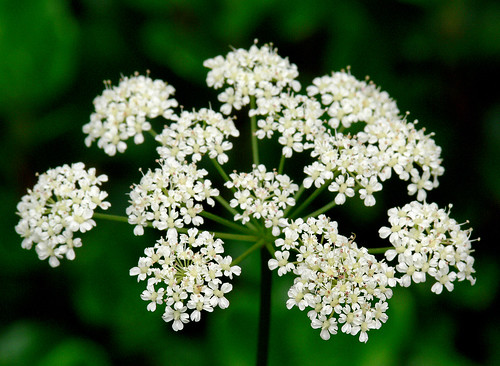TheGardenLady received this comment from Julie:
We bought our house in Port Perry, On in 2012 and immediately removed an eyesore of a “pond”, but then were left with an area of 12’x16′ of dense Goutweed. We tilled and removed plants & roots about two times that year. The following spring we continued the same process another two times before we were able to plant grass on the area. This plant is a nightmare to deal with! I have no idea why the previous owner “loved” this plant so much?! We now need to dig up the front garden as it has completely taken over that area as well along with it spreading into the ceder hedges.
Sorry to read your email about the Goutweed on your new property. It is a letter of warning to anyone buying plants to be wary of invasive plants because of how difficult it is to eradicate them. Read this.
Goutweed has numerous other common names including ground elder, herb gerard, bishop’s weed, snow-in-the-mountain, also sometimes called English masterwort, or wild masterwort and its Latin name is Aegopodium podagraria,
Goutweed is listed as an invasive plant in the US and Canada. See here. The definition of an invasive plant is any plant tending to spread prolifically and undesirably or harmfully. No one should plant anything that is listed as invasive. TheGardenLady doesn’t understand why stores that sell seeds and plants still sell any seeds or plants that the government lists as invasive. Responsible nurseries should know about the plants and seeds they sell to be able to tell you if you might have a problem with the plant. So ask questions when you buy a plant or seeds. Many of the plants that have become invasive were brought to the United States or other countries for ornamental purposes or for agricultural use, not knowing they would become invasive or problematic for gardeners.
But since there are lists of most invasive problem plants, there should be a law against selling them. Knowledgeable gardeners know how difficult it is to get rid of these invasives. If you are a novice gardener, please contact your local native plant society or state Department of Natural Resources to find out which plants are invasive in your area.

